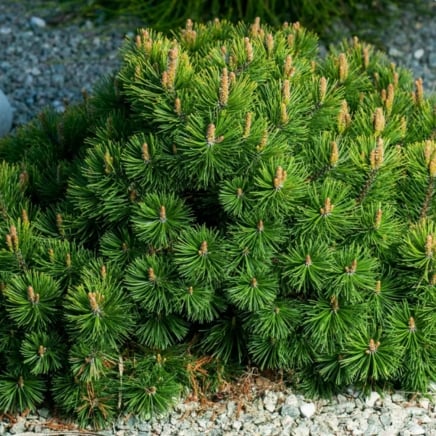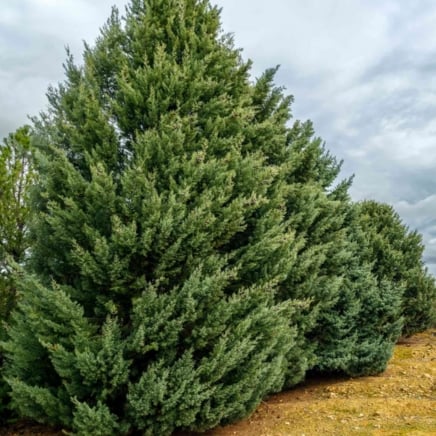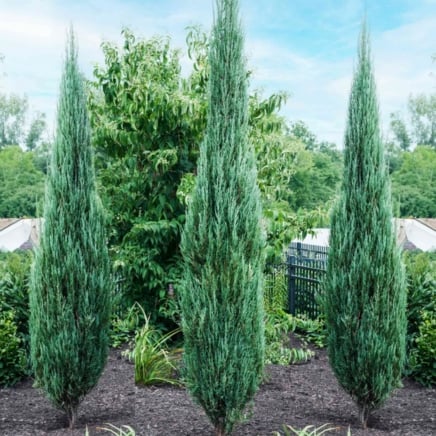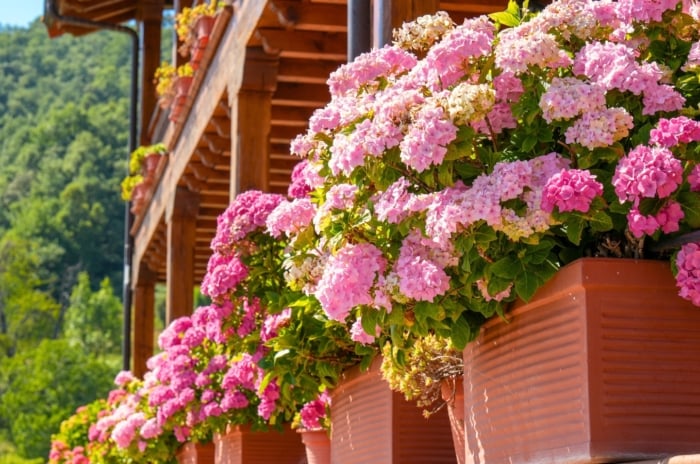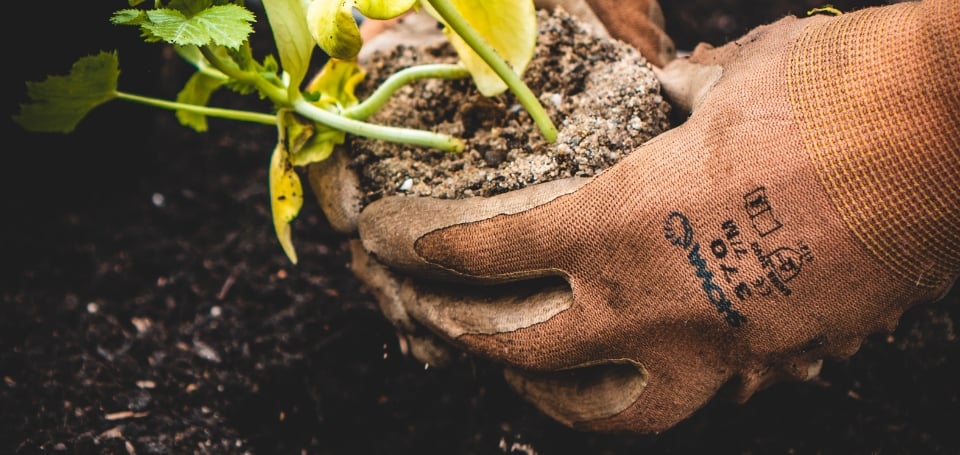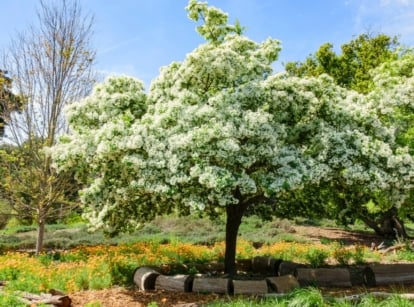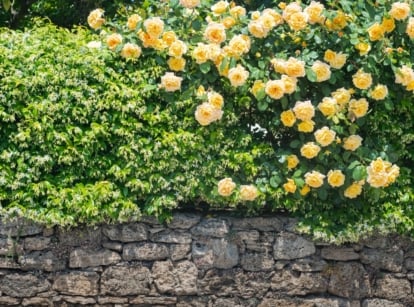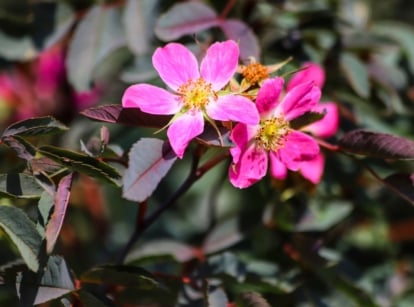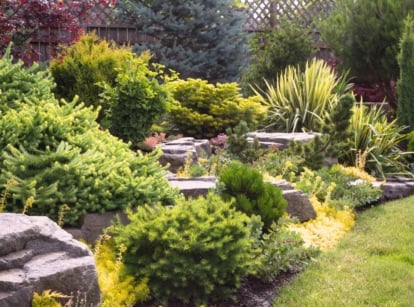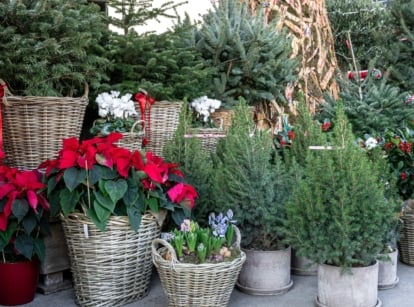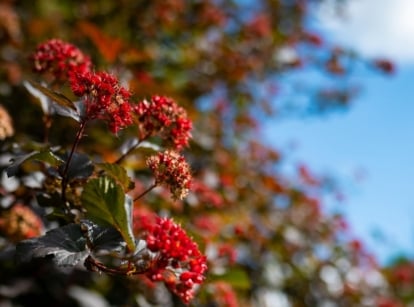7 Drought-Tolerant Arborvitae Alternatives for Dry Climates
Arborvitae are versatile across garden scales with year-round appeal, although their reliance on regular moisture makes them a challenge in dry conditions. With native conifers and their cultivars, options abound for durable evergreens in a range of sizes, colors, and shapes. Gardening expert Katheirne Rowe explores arborvitae stand-ins for high-performance in low-water sites.

Contents
Arborvitae has numerous cultivars of the Eastern U.S. native species that are versatile across growing zones and garden spaces. The conifers range from columnar and upright to low and rounded and become a year-round anchor with their tidy, evergreen forms.
While they act as an easy backdrop, privacy screen, or specimen, Thuja requires regular moisture to thrive and doesn’t withstand prolonged dry spells. This can be a challenge in arid climates or those with fluctuating conditions.
For drought-resistant trees and shrubs to stand in for arborvitae’s easy fit and care, look to native conifers and their cultivars. In a range of sizes and shapes, the sturdy evergreens support the landscape throughout the seasons.
While drought-tolerant arborvitae alternatives require the appropriate climate, sun exposure, and adequate moisture as young trees establish strong, healthy roots, our list includes resilient species and cultivars that need few additional resources as they mature.
Deodar Cedar

|
|
botanical name Cedrus deodara |
|---|---|
|
|
sun requirements Full sun to partial shade |
|
|
height 40-50’ |
|
|
hardiness zones 7-11 |
Deodar cedars are stately specimens as large, pyramidal trees. They have an informal habit with long, arching branches draped with full, gray-green needled foliage.
The rugged deodar tolerates a range of soils and growing conditions, including urban and coastal exposures. Once established, they’re heat and drought-tolerant. Because of their size, they become a dominant focal point, and the broad branches need plenty of space to spread.
Smaller cultivars of these drought-tolerant arborvitae alternatives suit various garden scales. The dwarf variety ‘Feelin’ Blue’ in silvery blue-gray is a showstopper with graceful needles that drip from arching stems. It reaches only four to five feet tall and has a spreading habit.
For a bright gold counterpart, ‘Feelin’ Sunny’ creates a soft haze in high contrast. ‘Sunny’ grows larger as a small specimen tree at 12 to 15 feet tall. Both ‘Feelin’ Blue’ and ‘Feelin’ Sunny’ make a bold contrast to dark green or purple foliage plants.
Holly

|
|
botanical name Ilex spp. |
|---|---|
|
|
sun requirements Full sun to partial shade |
|
|
height 4-60’ |
|
|
hardiness zones 6-9 |
Hollies have a durable nature and maintain their neat habits even in tough growing conditions. Sandy soils, high heat, humidity, and dry spells don’t prevent the evergreen foliage and red berries from shining in the landscape. Hollies bring year-round appeal and high winter interest with their fruits, which birds appreciate as a cold-season food source.
American holly, Ilex opaca, is a handsome native with dark, broad leaves and bright berries. It grows slowly but reaches heights of 40 to 60 feet. For female trees to produce fruit, a male is necessary in the vicinity for cross-pollination.
Dwarf selections and hybrids of North American native hollies make good drought-tolerant arborvitae alternatives, too, with wildlife and pollinator value. Look for yaupon hollies (Ilex vomitoria) for small specimen trees with numerous compact cultivars to serve as foundation shrubs and hedges. I. vomitoria f. pendula has a unique weeping habit.
Juniper

|
|
botanical name Juniperus spp. |
|---|---|
|
|
sun requirements Full sun |
|
|
height 2-50’ |
|
|
hardiness zones 3-9 |
Junipers vary in shape and size from spreading groundcovers to tall, columnar trees. They add year-round visual interest with foliage in blue, gray, dark green, and gold. Their waxy blue fruits extend the appeal into winter.
This drought-tolerant arborvitae alternative is tough and grows almost anywhere, with more refined cultivars showing ornamental appeal coupled with a hardy constitution. As a genus, junipers show strong resilience in low-water situations.
Tidy juniper varieties like ‘Blue Arrow,’ ‘Spartan,’ and ‘Moonglow’ fit numerous garden locations and add richness in form, color, and texture. ‘Blue Point’ has a columnar shape with blue needles and creates a dramatic focal point.
Eastern red cedar (Juniperus virginiana) is a North American native that reaches 30 to 40 feet tall. Foliage is blue-green with overlapping scales. With exceptional drought tolerance and ease of growth, Eastern red cedar is a staple in dry situations. Cultivars like ‘Brodie’ bring slender, columnar forms.
Leave them unpruned to enjoy their natural shape. Like arborvitae, they take topiary and shaping well for more formal and even whimsical features.
Arizona Cypress

|
|
botanical name Hesperocyparis arizonica |
|---|---|
|
|
sun requirements Full sun |
|
|
height 40-60’ |
|
|
hardiness zones 7-11 |
Arizona cypress is a pyramidal conifer with a narrow form and rugged appeal. Native to the southwestern U.S. and Mexico, the conifer withstands heat and drought. Low-maintenance, the evergreen establishes easily in a variety of soils.
The cypress has bright, silvery needles on strong branches with full skirting to the ground and an icy look. In warm climates, it cools the display and makes an easy-care windbreak, privacy screen, or erosion control selection.
Look to ‘Carolina Sapphire’ with fine blue-gray needles for a soft, hazy aesthetic. The drought-tolerant arborvitae alternative needs minimal, if any, pruning.
Another low-water cypress option is Cupressus macrocarpa, or Monterey cypress. The California native occurs naturally in two groves localized to Monterey Bay. While nearly extinct in the wild, it’s widely cultivated as a landscape specimen that tolerates arid summers and wet winters.
Blue Spruce

|
|
botanical name Picea pungens |
|---|---|
|
|
sun requirements Full sun |
|
|
height 30-60’ |
|
|
hardiness zones 2-7 |
Blue spruce is native to the central Rocky Mountains and has a large, narrow, conical habit and perfect Christmas-tree form. Best in cool climates, the blue-needled species is one of the most drought-tolerant among the genus.
The waxy needles are a source of the spruce’s resilience against varying conditions. The wax helps with moisture retention, transpiration, and light reflectivity, making them a fit for waterwise landscapes.
Dwarf and weeping cultivars are well-suited to smaller spaces as drought-tolerant arborvitae alternatives. Colorado blue spruce ‘Fat Albert’ has cool blue foliage and a stout pyramidal habit. ‘The Blues’ weeps in silvery blue as a dwarf, spreader.
Pine

|
|
botanical name Pinus spp. |
|---|---|
|
|
sun requirements Full sun to partial shade |
|
|
height 50-80’ |
|
|
hardiness zones 3-8 |
Certain Pinus species make viable drought-tolerant arborvitae alternatives. These include P. sylvestris (Scots), P. contorta (lodgepole), P. jeffreyi (Jeffrey), and P. ponderosa (Ponderosa). With the exception of Scots pine from Eurasia, the others are Western North American species.
These are long-lived, substantial trees that withstand harsh conditions from rocky soils to frigid winters and dry summers.
Pinus mugo is an interesting multi-stemmed pine for low-water sites in cool climates (hardy in zones 2-7). The dense spreader grows into a shrub or small tree, wider than it is tall. Prune it annually to manage size, or let it spread as much as 25 feet in optimal conditions. Bright green needles bring a fuzzy texture among broadleaf specimens.
Plum Yew

|
|
botanical name Cephalotaxus harringtonia |
|---|---|
|
|
sun requirements Full sun to full shade |
|
|
height 5-10’ |
|
|
hardiness zones 6-9 |
Japanese plum yew, with thick, dark evergreen needles, brings high texture to the arrangement. Plum yews feature stiffly upright stems or low-growing, loosely spreading branches, depending on the cultivar. They grow slowly with neat forms that can take a decade to reach several feet tall.
‘Duke Gardens’ is a dwarf spreading selection with a vase shape. Leaves are fresh and bright green when they emerge on the tips of stems. The shrub thrives in hot, humid summers and is a good yew option for southern climates. They benefit from protection from intense afternoon sun and do well in shade.
Spreading plum yew relies on consistent moisture to establish robust roots. Once established, it is tolerant of drought periods.

